Picture this: you’re setting up for an outdoor wedding. White tablecloths flutter in the breeze, guests arrive in pastel suits, and everything looks perfect. Then—dark clouds roll in. And just like that, the most critical question becomes: Is your canopy tent truly waterproof?
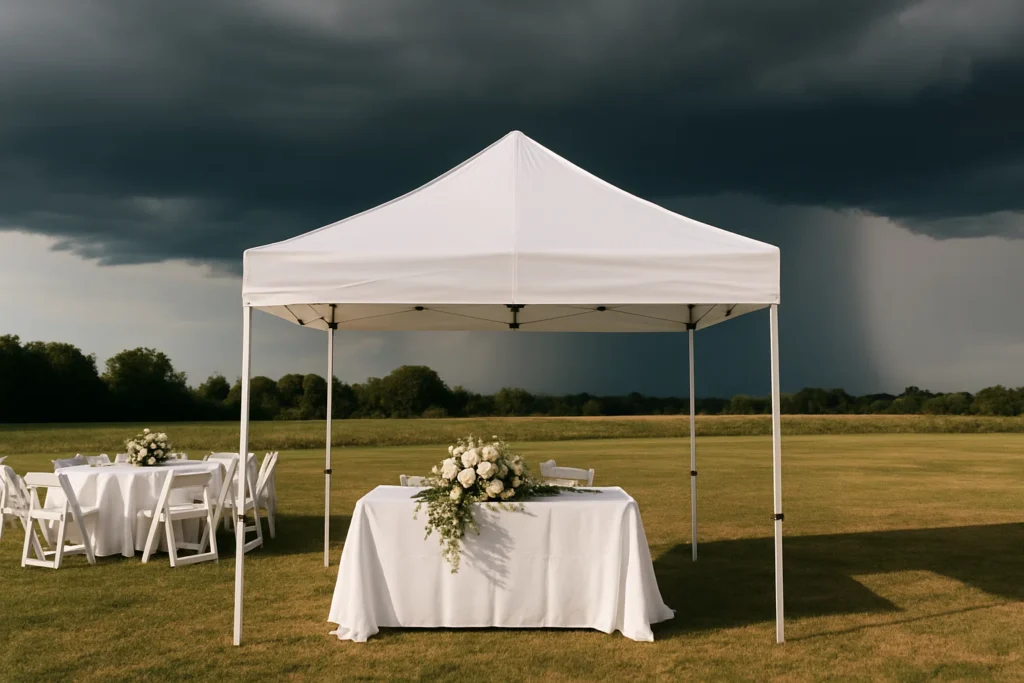
Understanding the Waterproof Spectrum
It’s easy to assume all tents are created equal, but in reality, there’s a huge difference between “waterproof,” “water-resistant,” and “water-repellent.” Here’s what each term actually means and how it applies to your tent’s survival during a storm.
Waterproof: No water passes through—ever. Requires sealed seams, high hydrostatic ratings, and thick coatings like PU or PVC.
Water-Repellent: Water beads and rolls off. Effective for light to medium rain, but coating wears off with use.
Water-Resistant: Slows moisture, but won’t stop it. Not suitable for anything beyond a drizzle.
The devil is in the details. That’s why serious outdoor users should always look for sun shade canopy systems that specify hydrostatic head performance and seam construction—not just surface fabric.
How Is Waterproofing Measured?
Waterproofing isn’t a guess—it’s tested. The Hydrostatic Head Test measures the height of water (in mm) a fabric can resist before leaking. Here’s how it works:
A cylinder is placed vertically on the fabric. Water is poured in gradually. The height of water (in millimeters) when the first drop penetrates the fabric is the hydrostatic head rating.
For example, 1500mm = light rain protection, while 3000mm+ is considered storm-grade. MOQI’s premium 600D polyester tents regularly test above 2000mm after coating.
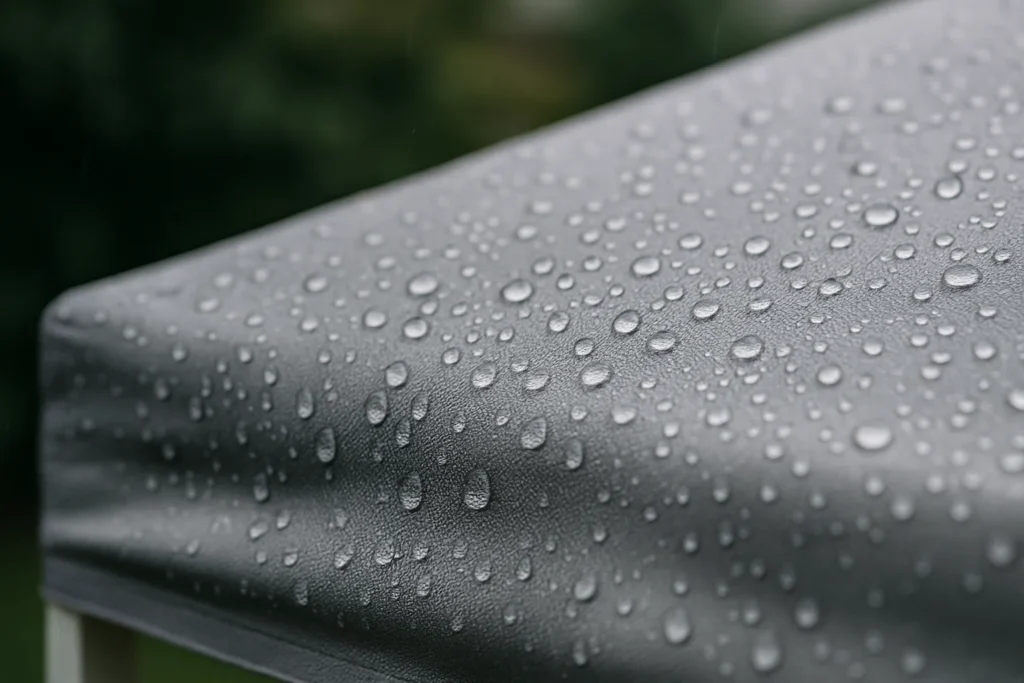
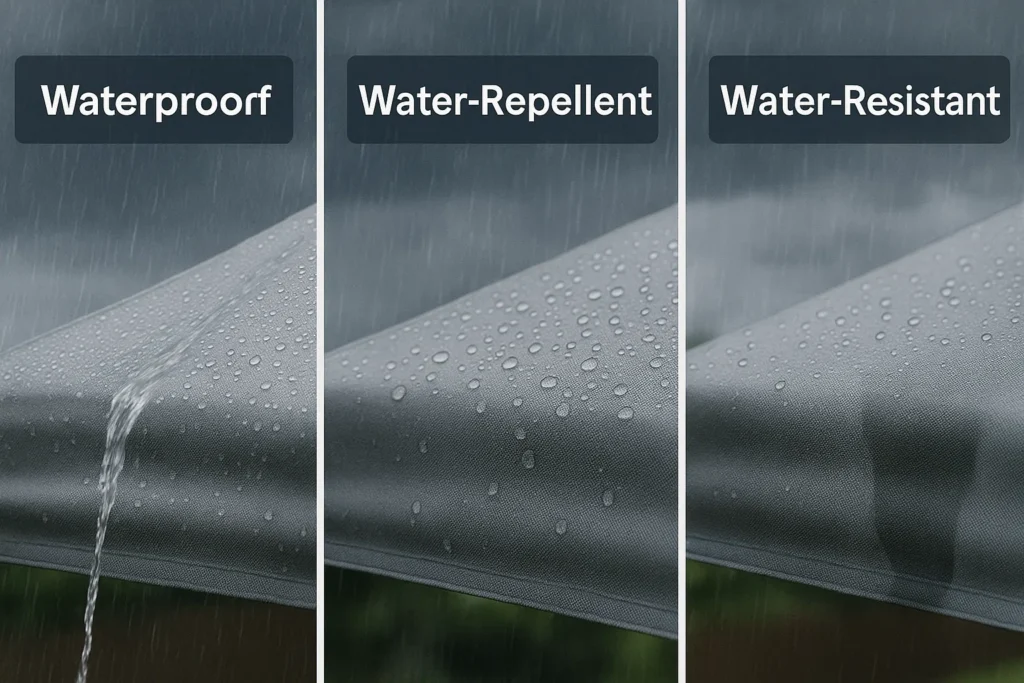
Fabric Strength vs. Waterproof Rating
We often get asked: “Is vinyl better than polyester?” Well, it depends. Here’s a simplified breakdown:
600D Polyester: Strong, printable, and highly water-resistant with PU coating. Great for branding.
PVC Vinyl: 100% waterproof but heavy and difficult to print on. Less breathable.
300D Polyester: Lightweight and cheaper, but lower waterproof rating and less durable.
Canopy tent buyers looking for long-term usage at outdoor trade fairs or brand events often choose 600D polyester for its ideal strength-to-weight ratio.
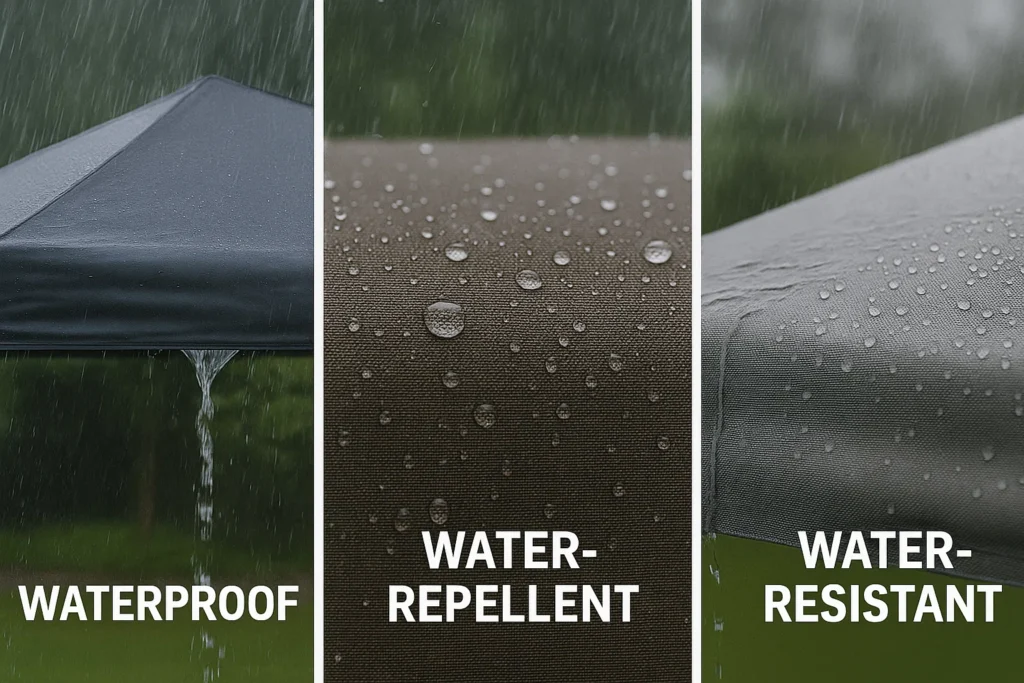
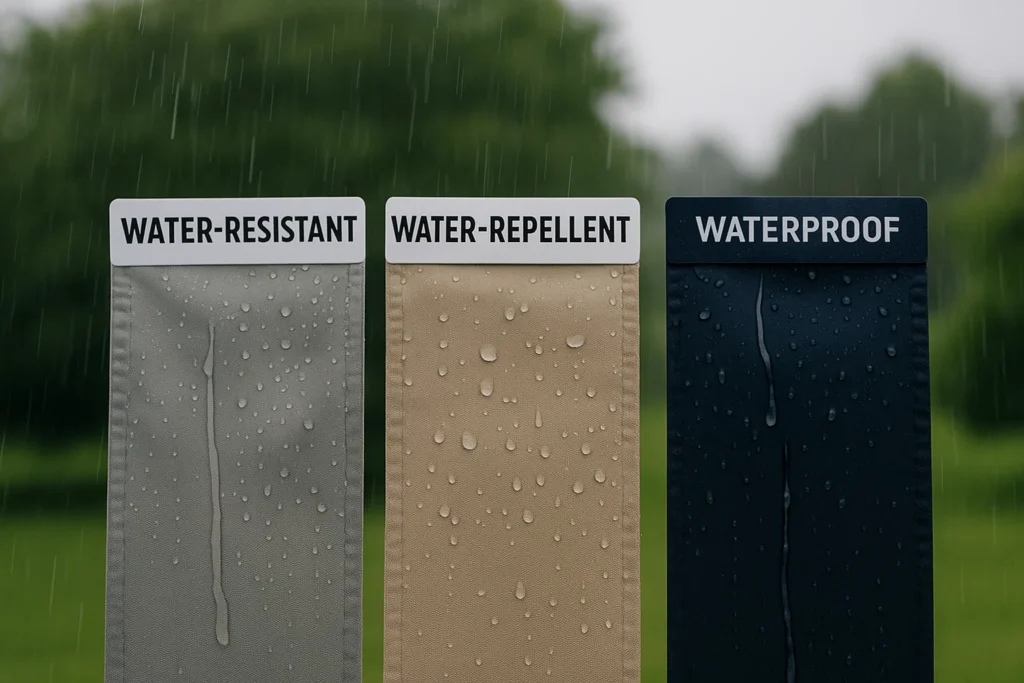
What About Wind & UV Resistance?
Rain isn’t your only enemy. Strong winds can collapse poor-quality frames, and UV rays can degrade fabric over time. That’s why MOQI’s sun shade canopy designs go beyond waterproofing:
Wind Resistance: Our reinforced steel and aluminum frames withstand up to 75mph gusts with proper anchoring.
UV Protection: UV-blocking coatings protect not only your guests but the fabric itself from fading or fiber breakdown.
Anti-Pooling Roof Angles: Roof structures are tensioned to ensure water runs off efficiently without sagging in the middle.
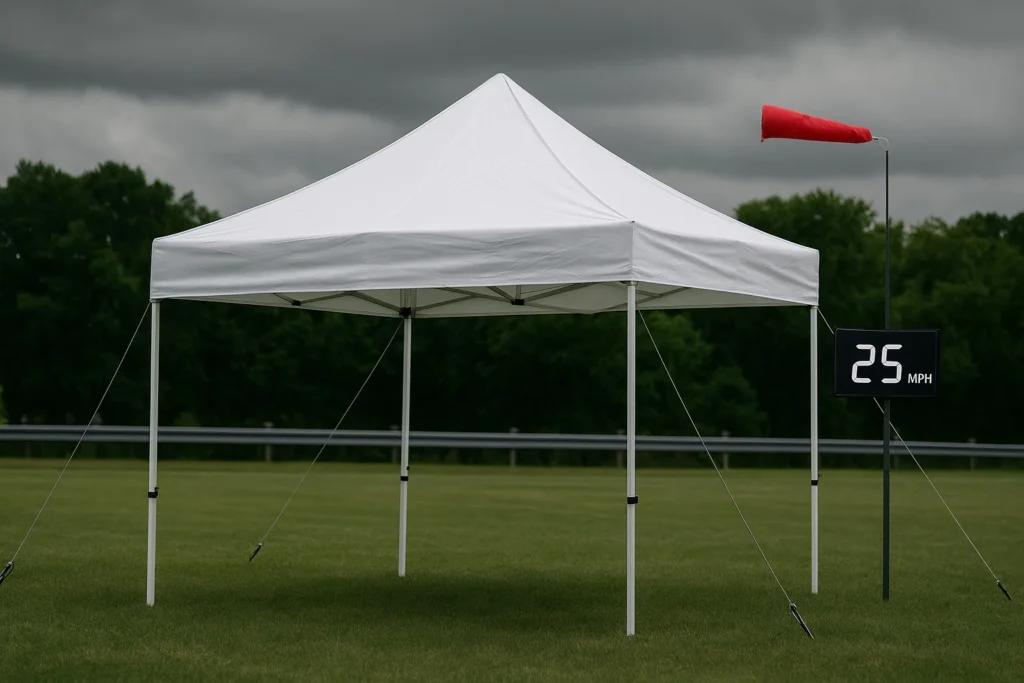
Buying Guide: Which Tent Is Right for You?
Not all users need the same features. Here’s a quick guide to help you choose the right canopy depending on your situation:
Weekend Vendors / Farmers Markets: Opt for 600D polyester with DWR coating and quick setup frame. Balance of weight and strength is key.
Luxury Events / Weddings: Look for high hydrostatic head (2000mm+) and elegant sidewall options. A full waterproof setup is non-negotiable.
Construction Sites: Choose industrial-grade PVC vinyl tents with fully welded seams and flame retardant certification.
Campers / Hobbyists: Lightweight but coated 300D polyester is enough for occasional use, especially in moderate climates.
Choosing the right canopy tent isn’t just about the price tag—it’s about matching features to your real-world environment.
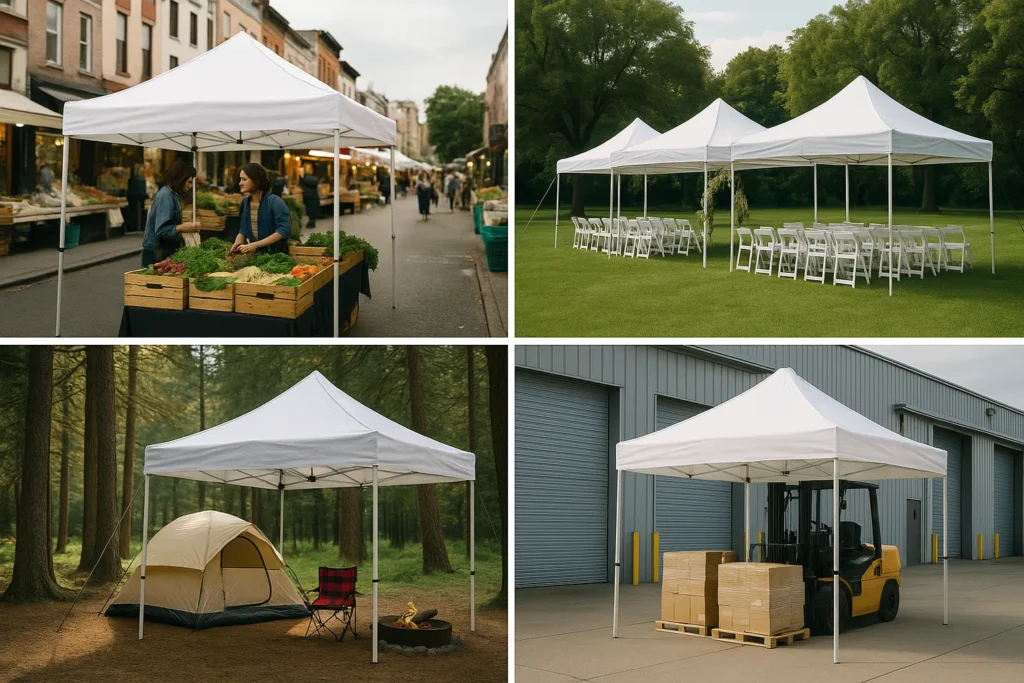
Pro Tips: Maintaining Your Tent’s Waterproof Performance
No matter how good your fabric is, long-term water resistance requires care. Here’s how to make it last:
Dry Before Storage: Never pack a wet tent. It promotes mildew and damages coatings.
Reapply DWR Spray: Every season, refresh the water-repellent coating to keep beads rolling.
Inspect Seams Annually: Add seam sealer as needed to maintain full waterproof protection.
Avoid Prolonged Sunlight Storage: UV damage can degrade polyester and vinyl alike. Use covers.
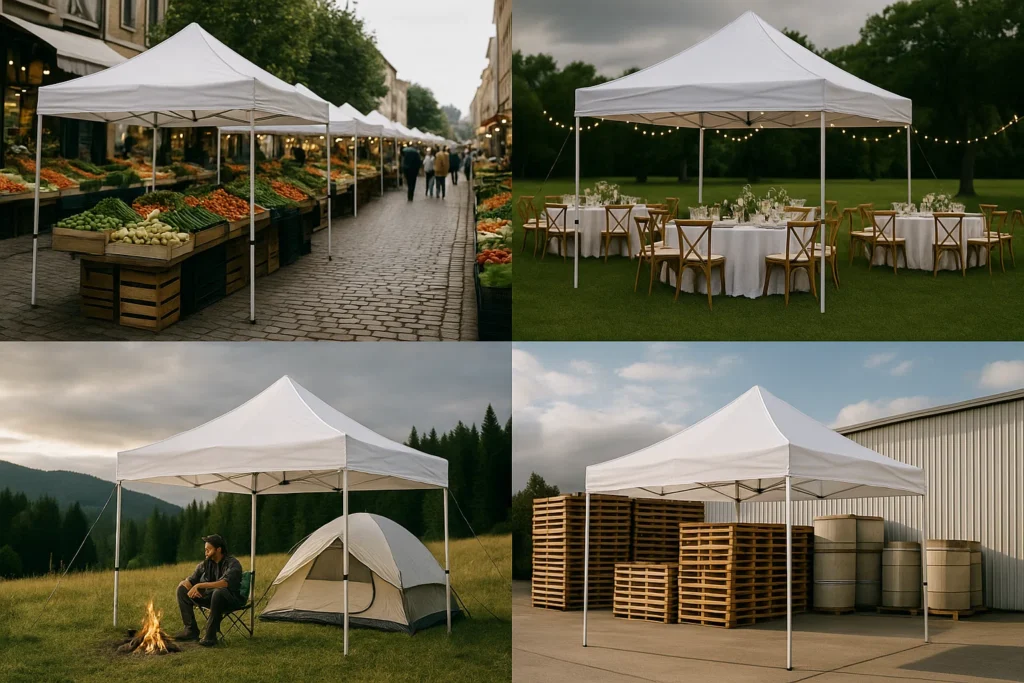
Final Thoughts: Stay Dry, Stay Smart
Waterproofing is science—and strategy. The best sun shade canopy isn’t just coated fabric. It’s smart engineering, user-aware design, and brand-aware materials.
Whether you’re running a food stall in the rain or planning a branded outdoor event, don’t gamble with low-quality materials. MOQI combines lab-tested fabrics, professional frames, and long-term support to make sure you stay dry—and look good doing it.
Frequently Asked Questions
What hydrostatic head rating is considered waterproof?
A: According to EN343 standards, anything above 1500mm is waterproof. For outdoor canopies, aim for 2000mm+ for added protection.
Can I leave my canopy up overnight in the rain?
A: Yes, if it’s made from waterproof-rated material (like 600D polyester or PVC), has sealed seams, and is properly tensioned and anchored.
Will waterproof spray work on a non-waterproof canopy?
A: It can help, but won’t make a water-resistant tent fully waterproof. Think of it as reinforcement, not transformation.
How long does a waterproof canopy tent last?
A: With proper care, high-quality tents can last 3–5 years or more. Avoid mildew, sun exposure, and mechanical damage for best lifespan.

